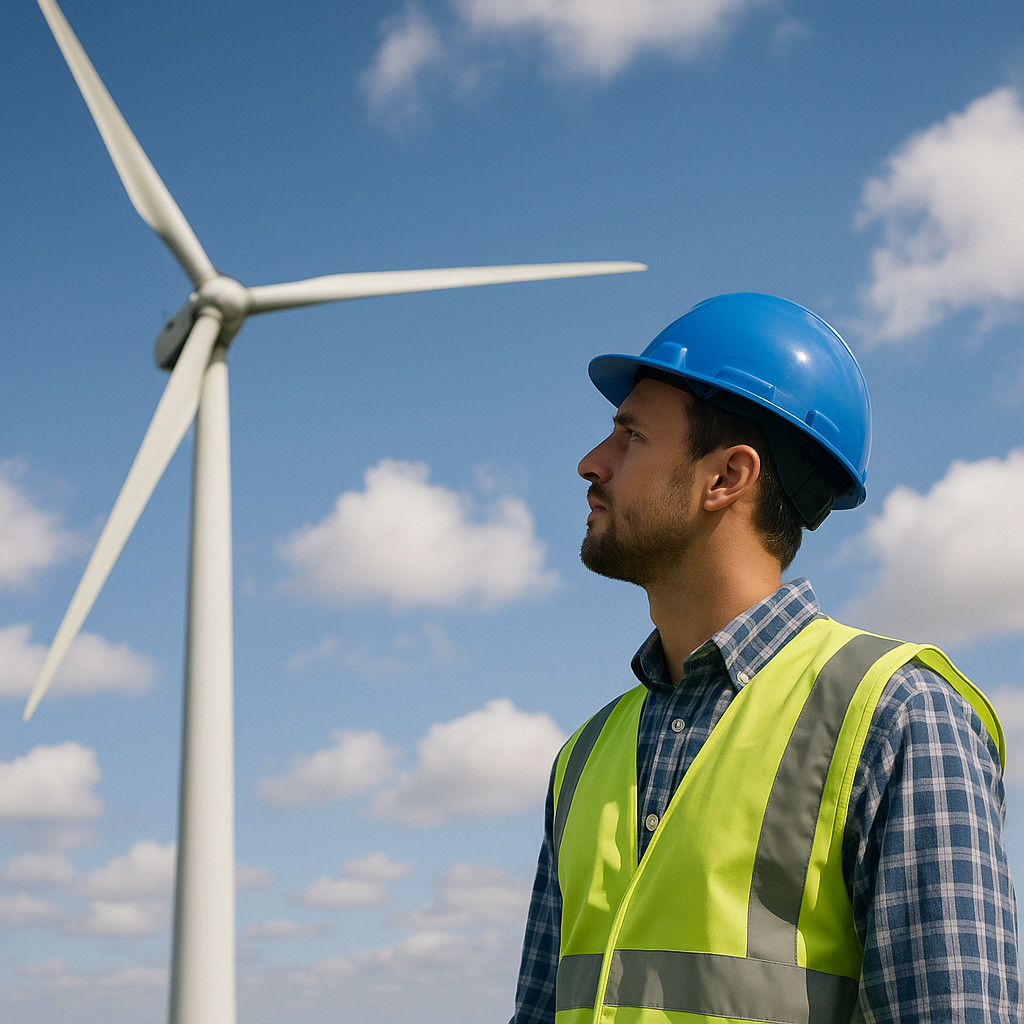The growing focus on renewable energy has made wind power one of the most sought-after energy sources worldwide. Wind turbines, whether for small-scale self-consumption or large-scale wind farms, require a complex set of permits and licenses to ensure compliance with environmental, technical, and legal regulations. In Turkey, the regulatory framework for wind energy projects is comprehensive and involves multiple administrative authorities.
This article explains the types of permits required to install a wind turbine, the legal framework governing wind energy projects, the application steps, and common legal and environmental considerations.
1. Legal Framework for Wind Turbine Permits
Wind energy projects in Turkey are primarily regulated by:
- Electricity Market Law No. 6446.
- Renewable Energy Law No. 5346 (YEK Law).
- Environmental Law No. 2872 – including Environmental Impact Assessment (EIA) regulations.
- Zoning and Construction Law No. 3194.
- Occupational Health and Safety Law No. 6331.
- EPDK Licensing Regulations – issued by the Energy Market Regulatory Authority.
2. Types of Wind Turbine Projects
2.1. Small-Scale (Unlicensed) Wind Turbines
- Typically ≤1 MW capacity.
- Used for self-consumption or small community projects.
- Require simplified permits but must still comply with zoning and environmental rules.
2.2. Large-Scale (Licensed) Wind Farms
- Exceed 1 MW capacity.
- Require EPDK generation license and multiple technical approvals.
- Must participate in YEKA (Renewable Energy Resource Areas) or competitive tenders for capacity allocation.
3. Essential Permits and Approvals
3.1. Pre-Licensing from EPDK
For large-scale projects, the first step is obtaining pre-licensing (ön lisans) from EPDK. This pre-license allows investors to:
- Conduct feasibility studies.
- Secure land-use rights.
- Obtain necessary technical and environmental permits before applying for a full generation license.
3.2. Generation License
A generation license is mandatory for projects over 1 MW capacity. It is issued by EPDK after all other preconditions (EIA, zoning, grid connection) are met.
4. Zoning and Land Use Permits
4.1. Zoning Plan Approval
Wind turbines require compliance with zoning regulations:
- The land must be designated as energy production area in the zoning plan.
- If not, investors must apply for zoning plan changes through local municipalities.
4.2. Construction and Building Permits
- A construction permit (inşaat ruhsatı) from the local municipality is mandatory.
- Structural safety and tower foundation plans must comply with national standards.
5. Environmental Impact Assessment (EIA)
Environmental considerations are crucial for wind projects:
- Projects exceeding 1 MW or with multiple turbines often require a full EIA Report.
- For smaller projects, an “EIA Not Required” certificate can be obtained.
EIA evaluations include:
- Impact on wildlife (especially birds and bats).
- Noise and shadow flicker effects.
- Landscape and visual impact.
- Land use and agricultural restrictions.
6. Grid Connection Permits
Wind turbines must be connected to the national grid:
- TEİAŞ (Turkish Electricity Transmission Company) or local distribution companies issue grid connection approvals.
- A connection agreement and technical compatibility study are required.
7. Technical and Safety Approvals
Before installation:
- Turbine models must meet TSE (Turkish Standards Institution) or IEC international standards.
- Safety features, grounding systems, and lightning protection must be documented.
- Occupational safety plans must be submitted in compliance with Law No. 6331.
8. Aviation and Defense Permits
Wind turbines can affect air navigation and radar systems:
- Civil Aviation Authority (SHGM) approval is required for turbines near flight paths or airports.
- Ministry of Defense may review projects located near military radar or strategic sites.
9. Other Permits and Notifications
- Forest or Agricultural Land Permits: If the turbine is installed on forest or agricultural land, special permits and compensatory payments are required.
- Cultural Heritage Permissions: If the project area is near archaeological or cultural sites, approval from the Cultural Heritage Board is needed.
- Noise Regulation Compliance: Proof that noise levels meet environmental standards.
10. Financial and Legal Requirements
10.1. Application Fees
- EPDK licensing fees (vary based on capacity).
- Municipality fees for building and zoning permits.
10.2. Insurance
- Liability and environmental damage insurance is required to cover accidents, mechanical failures, or environmental harm.
11. Timeline for Permit Acquisition
The timeline depends on project size:
- Unlicensed projects (≤1 MW): 6-12 months.
- Licensed wind farms (>1 MW): 18-30 months, including EIA, zoning, and grid connection steps.
12. Common Legal Risks
- Zoning disputes with municipalities or landowners.
- EIA challenges by environmental groups.
- Delays in grid connection due to technical capacity limitations.
- Contractual disputes with EPC (Engineering, Procurement, Construction) contractors.
13. Role of Legal Counsel
A lawyer specializing in energy law can:
- Review and prepare EPDK applications.
- Ensure compliance with environmental, aviation, and defense regulations.
- Draft contracts with turbine suppliers and EPC companies.
- Represent the investor in disputes or appeals.
14. Conclusion
Installing a wind turbine involves compliance with multiple legal and technical regulations. From EPDK licensing and EIA approval to zoning permits, grid connection, and aviation clearances, every step requires careful planning and legal oversight.
Key Takeaways:
- Small-scale projects benefit from simplified permits but must still meet zoning and safety standards.
- Large-scale wind farms require EPDK generation licenses and comprehensive environmental studies.
- Investors should work closely with technical experts and legal advisors to avoid costly delays and ensure regulatory compliance.

Yanıt yok